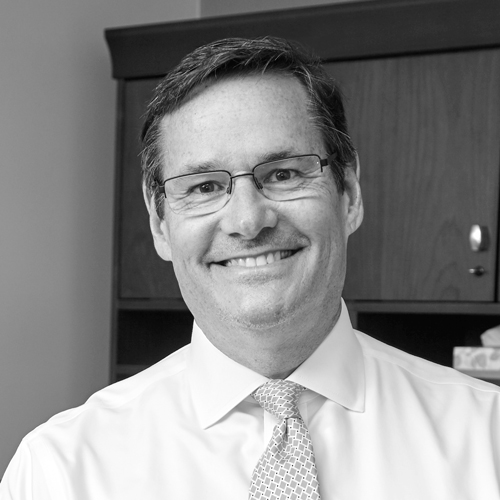Until recently, the human microbiome, composed of the bacteria and other organisms that live on and within us, has been misunderstood and underappreciated by medical science. The past decade or so has seen more interest in the field, as links between the microscopic creatures living in our gut and human health have been found.
It is a field that intrigues Flagship Ventures general partner David Berry, as well as those working in the firm’s “idea factory.” Flagship, a venture capital firm that creates most of the companies in which it invests from scratch, has a unique business model. The Cambridge, Massachusetts, firm has a remarkable knack for spinning out promising start-ups focused on healthcare and sustainability. Its systematic approach to research and development is one that any enterprise could learn from to foster a culture of innovation.
A few years ago, Berry and Flagship’s VentureLabs unit, the idea factory, delved into research that suggested a link between certain gut bacteria and obesity. The findings of the existing research were, to his thinking, a “crude characterization and a giant extrapolation of conclusions.” Even so, there was enough meat on the bone to warrant further investigation.
This is how many of Flagship’s investments get started: with a basic premise that the idea factory investigates and turns into a marketable concept. The process starts with a series of “explorations,” a term used to describe how the firm examines the existing science of a promising concept. During this stage, VentureLabs researchers look at the concept dispassionately from an outsider’s perspective and look at the topic from multiple angles. With no one on the team banking on a future in a narrow specialty, no Flagship personnel are beholden to existing scientific orthodoxy. Therefore, the firm can ask questions from unusual perspectives without preexisting biases. “We have a willingness to be naive,” Berry says.
The first avenue of exploration of the human biome, diagnostics to measure which bacteria were associated with which diseases, didn’t pan out because no strong correlations could be found. “We realized that we couldn’t make good diagnostics, so we killed that one,” Berry says. Another realization revolved around the premise that if the bacteria were impacting people, they were probably secreting things. Most of this research took place using mice, but the firm’s researchers found that the microbiome of mice was much different than that of humans, so that path turned out to be another dead end.
“Insurgent companies tend to do well in areas where there are no major players.”
Flagship didn’t give up on finding potential in the human microbiome, though. It began to study the biology of fecal transplants—where the microbiology of a healthy person is transmitted to one with a disease, most typically those suffering from recurrent Clostridium difficile infection. Such treatments were producing remarkable recovery rates, Berry says. It wasn’t practical to turn feces into drugs, but the research led to another realization: the gut microbiome actually functioned as a system similar to an organ. Studies of 250 people with healthy microbiomes showed consistent functionality despite significant variations in the organisms.
This research led to the development of a proto-company—a kind of test project for a new company—and then the founding of Seres Therapeutics in 2010, based on what was known about the holistic functionality of the microbiome. “We developed consortia at the core of the microbiome’s function that allowed for other microorganisms to be attracted around them that would allow for a shift in function from a disease state to a healthy state,” Berry explains. Further, Flagship discovered a way to isolate the active “ingredient” in fecal transplants and thus had the basis for spinning out Seres Therapeutics as itsown company.
In 2013, Seres began clinical trials for a treatment for recurrent Clostridium difficile infection, which has been designated as a breakthrough therapy by the FDA. Seres’s approach also holds promise for ulcerative colitis, graft-versus-host disease, and a range of other diseases.
Seres is just one of forty-five companies that originated in Flagship’s VentureLabs unit, and the list is growing. “Every year, we produce about five companies out of about ten proto-companies,” he says. One of the keys to Flagship’s venture-generating process is having no fear about canceling development of an idea or a prototype company when serious doubts are raised about its viability. Even the exploration phase of an idea, a disciplined process starting with a research question, has a four- to six-week deadline. If researchers can’t generate a promising concept for a new company, the exploration ceases or is redirected. Too often in contrast, Berry says, leaders of start-ups keep their organizations afloat even when the business case for the enterprise doesn’t hold up.
Flagship Ventures’ creations are paradigm-shifters, companies developing breakthrough technologies. They generally do not have to compete with large, established players. “Insurgent companies tend to do well in areas where there are no major players,” Berry notes. For Flagship, when a proto-company doesn’t appear likely to succeed, killing it off is not considered a failure because it’s just part of the creative process. And there are always other promising ideas in the VentureLabs pipeline to explore.
Another key to Flagship’s success is that its researchers, unlike most others, do not specialize in specific fields of study. They do not depend on getting published in scientific journals to boost their professional prestige. This frees them from asking oddball questions and allows them to believe in ideas that many experts might consider far-fetched. “We can go in and out of fields as we like,” Berry emphasizes.
The result is intellectual freedom that is critical to Flagship’s business model. There’s also a good chance that it will lead to numerous medical breakthroughs.

